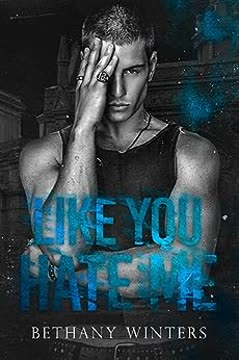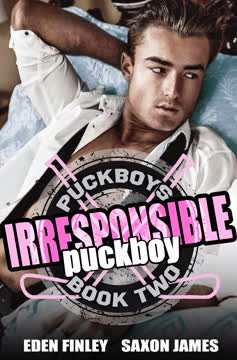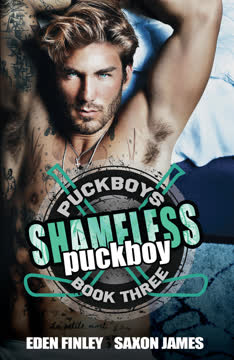Key Takeaways
1. A High School Rivalry Ignites with Accusations and Violence
“You’re my fucking problem.”
Hockey passion vs. legacy. Oakley Reed, a talented high school hockey player, finds peace and purpose on the ice, separate from the shadow of his famous hockey family (father Travis Reed, uncle Trevor Reed). After winning the city championship, he offers a compliment to rival Quinton de Haas, who reacts with explosive anger.
Accusations of nepotism. Quinton, seething from the loss, slams Oakley against a wall, accusing him of winning only because his wealthy father paid off the refs. This hits a nerve for Oakley, who struggles to make his own name outside his family's legacy.
Violence erupts. Quinton's relentless taunts about Oakley's privilege and family name push Oakley past his limit. Despite his usual calm demeanor, Oakley throws the first punch, cementing their animosity.
2. Collegiate Collision: Rivalry Undermines Team Performance
We don’t mesh on the ice.
Unexpected teammates. Four years later, Oakley and Quinton find themselves on the same collegiate team at Leighton University. Their intense high school rivalry continues, creating friction both on and off the ice.
Impact on team play. Their inability to work together affects the team's performance, particularly when they are on the same line. Quinton's tendency to be a "puck hog" and ignore Oakley when he's open frustrates Oakley and costs the team scoring opportunities.
Coach's frustration. Coach (Oakley's uncle) notices their conflict and tries to force them to find common ground, but their animosity persists, fueled by constant barbs and digs at each other.
3. A Framed Drug Test Leads to Suspicion and a Captaincy Shift
“You tested positive.”
Mandatory drug testing. The NCAA mandates drug testing at Leighton after players at other schools test positive for performance-enhancing drugs. The team undergoes testing.
Quinton's positive result. Quinton is shocked to learn he tested positive for hydrocodone (Vicodin), a drug he insists he has never used. He believes there must be a mistake, perhaps a swapped sample.
Oakley becomes captain. Due to the positive test, Coach suspends Quinton and names Oakley the temporary captain. Quinton is furious, seeing this as another instance of Oakley benefiting from nepotism. Oakley overhears his roommate, Braxton, implying he played a part in getting Quinton suspended, sparking Oakley's suspicion that Braxton framed him.
4. Reckless Hookup Sparks a Winning Superstition
“I’ll believe it when I see it.”
Reputation tarnished. Despite his retest coming back negative, Quinton's reputation is damaged, and he feels "iced out" by the team. His father's continued disapproval of his hockey career adds to his misery.
Frat party encounter. Oakley sees Quinton at a party and overhears his father's harsh words. He tries to talk to Quinton, who pushes him away. Their verbal sparring escalates, leading Quinton to pull Oakley into a bathroom.
A spontaneous act. Challenged by Oakley's skepticism about his abilities, Quinton performs oral sex on Oakley. The intense encounter leaves both men reeling and questioning their assumptions about each other and themselves.
Superstition forms. Quinton, noting the timing of their hookup before their first win, develops a theory that their sexual encounters are linked to the team's success.
5. Enemies with Benefits: Winning Streak and Unexpected Intimacy
We need to start hooking up more.
The proposal. Quinton proposes a deal to Oakley: they should hook up before games as a superstition to keep the winning streak going. Oakley initially dismisses it as delusional but is swayed by the team's recent success and his own desire to win.
Rules and boundaries. They agree to a "no one knows" rule, limiting hookups to the nights before games and avoiding anal sex. Despite the rules and their lingering animosity, their sexual encounters are intense and addictive.
Intimacy grows. As they continue hooking up, they become more comfortable and vulnerable with each other, sharing personal details and spending time together outside of sex, blurring the lines of their "enemies with benefits" arrangement.
6. Beyond the Ice: Vulnerability, Family, and Deepening Connection
I think I’m addicted to the taste of your cum.
Addiction to each other. Their physical connection deepens, becoming more intimate and experimental (oral sex, mutual masturbation, anal play). They realize they are becoming addicted to each other, not just the sex or the winning.
Sharing vulnerabilities. They open up about their families: Quinton's neglectful parents who prioritize business over his happiness, and Oakley's supportive but legacy-focused family. Quinton reveals his lucky puck superstition and the meaning behind his tattoos.
Blurring lines. Their time together extends beyond hookups to include studying and spending time together during break. They share a tender kiss in public, signaling a shift in their relationship beyond just a physical arrangement.
7. Betrayal Uncovered: Fallout, Silence, and Heartbreak
You might not have held the gun, but you still helped pull the trigger.
The discovery. After having sex at his parents' penthouse, Quinton finds Oakley's Vicodin bottle. He confronts Oakley, realizing Oakley knew about Braxton's involvement in tampering with the drug test.
Confrontation and heartbreak. Quinton is devastated by Oakley's betrayal, accusing him of prioritizing his friendship with Braxton and the captaincy over Quinton's career and trust. He feels used and heartbroken.
Public exposure. Their heated argument is overheard by Oakley's roommates, who learn about their secret relationship. Quinton leaves, feeling completely shattered.
Consequences for Braxton. Braxton admits to swapping the sample lids to frame Quinton, believing he was helping Oakley. He is removed from the team and the university.
8. Seeking Forgiveness Amidst Despair
I didn’t know that I would care about what Braxton did or didn’t do because I didn’t know I would fall in love with you.
Silence and suffering. Three weeks pass with no contact between Oakley and Quinton outside of hockey. Oakley is miserable, tormented by the silence and the knowledge of the pain he caused.
Attempted reconciliation. Oakley goes to Quinton's apartment, desperate to talk. Hayes initially tries to turn him away, but Quinton appears, cold and distant.
Confession and plea. Oakley apologizes profusely, explaining he didn't know the full extent of Braxton's actions but admits he suspected something and didn't act. He confesses that seeing the real Quinton changed him and that he fell in love with him.
Quinton's pain. Quinton acknowledges Oakley's change but is deeply hurt by the betrayal. He lists the qualities he wanted in a partner, culminating in the need for someone who wouldn't betray him, leaving Oakley with little hope.
9. Frozen Four Bound: NHL Future and a Surprising Revelation
My name’s Louis Spaulding.
Team success continues. Despite the personal turmoil, the team continues winning, securing a spot in the Frozen Four tournament. Quinton is back as captain, playing exceptionally well.
NHL interest. After the game that clinches their Frozen Four spot, Coach calls Quinton aside to introduce him to Louis Spaulding, a prominent NHL agent interested in representing him. This is a major step towards Quinton's dream career.
A surprising recommendation. Louis Spaulding reveals that Oakley Reed recommended Quinton and spoke highly of his talent. He also casually refers to Oakley as Quinton's "boyfriend."
Stunned realization. Quinton is left speechless, processing the agent's interest, Oakley's unexpected recommendation, and the casual use of the term "boyfriend," which suggests Oakley has been open about their relationship despite their agreement.
Last updated:
FAQ
1. What is Iced Out by C.E. Ricci about?
- Rivalry to romance: The novel centers on the intense rivalry and evolving relationship between two college hockey players, Oakley Reed and Quinton de Haas, as they navigate personal and professional challenges.
- Sports and self-discovery: Set in the high-stakes world of NCAA hockey, the story explores themes of legacy, identity, and self-acceptance, with hockey serving as both backdrop and metaphor.
- Emotional and physical tension: The narrative balances steamy romance with emotional depth, following the protagonists from antagonism to a passionate, complicated connection.
- Key conflicts: Major plot points include family pressures, a drug test scandal, and the struggle to reconcile public personas with private desires.
2. Why should I read Iced Out by C.E. Ricci?
- Compelling character dynamics: The book offers a nuanced portrayal of enemies-to-lovers, with layered protagonists whose growth feels authentic and relatable.
- LGBTQ+ representation: It thoughtfully addresses LGBTQ+ themes in sports, challenging stereotypes and highlighting the courage required to live authentically.
- Realistic sports setting: Readers interested in hockey or sports culture will appreciate the accurate and immersive depiction of collegiate athletics.
- Emotional resonance: The story delivers both steamy romance and heartfelt moments, making it appealing to fans of both romance and character-driven fiction.
3. Who are the main characters in Iced Out by C.E. Ricci and what are their backgrounds?
- Oakley Reed: A senior hockey forward, Oakley is openly gay and the son/nephew of hockey legends, struggling to define himself outside his family’s shadow.
- Quinton de Haas: Oakley’s rival and teammate, Quinton is a talented, impulsive player with a complicated family legacy and a reputation for fighting.
- Supporting cast: Key figures include Braxton (Oakley’s best friend), teammates like Camden and Holden, and family members who shape the protagonists’ journeys.
- Complex relationships: Each character brings unique challenges and support, contributing to the team’s dynamics and the protagonists’ personal growth.
4. What are the key themes explored in Iced Out by C.E. Ricci?
- Identity and legacy: The novel delves into how family expectations and societal pressures shape personal identity, especially in the context of sports.
- Rivalry and intimacy: It examines the fine line between competition and attraction, showing how hostility can mask deeper feelings.
- Trust and betrayal: Central conflicts revolve around secrets, loyalty, and the consequences of broken trust, particularly in the drug test scandal.
- Resilience and redemption: Both protagonists face setbacks and demonstrate growth through vulnerability, teamwork, and forgiveness.
5. How does Iced Out by C.E. Ricci portray LGBTQ+ themes in sports?
- Openly gay protagonist: Oakley’s journey as an openly gay athlete highlights the challenges and courage required in a traditionally heteronormative environment.
- Fluidity and self-discovery: Quinton’s evolving understanding of his sexuality is explored with sensitivity, showing the confusion and fear around coming out.
- Breaking stereotypes: The book challenges traditional notions of masculinity and sexuality in sports, promoting inclusivity and acceptance.
- Locker room dynamics: The narrative addresses secrecy, fear of exposure, and the importance of supportive teammates.
6. How does the rivalry between Oakley Reed and Quinton de Haas develop in Iced Out by C.E. Ricci?
- High school antagonism: Their rivalry begins with physical and verbal clashes, fueled by family legacies and personal animosity.
- Forced college proximity: Playing for the same college team intensifies their conflict, as they must cooperate despite mutual dislike.
- Turning point: A secret sexual encounter shifts their dynamic, leading to a complex mix of hostility, attraction, and reluctant partnership.
- Evolving relationship: Their rivalry gradually transforms into mutual respect, intimacy, and eventually love.
7. What is the significance of the superstition and rules in Iced Out by C.E. Ricci?
- Origin of superstition: After their first secret hook-up coincides with a team win, Quinton suggests continuing the ritual to maintain their streak.
- Rules for secrecy: They set boundaries—keeping their relationship secret, limiting encounters to pre-game nights, and avoiding certain acts—to protect their reputations and team.
- Breaking boundaries: As their connection deepens, they break many of their own rules, symbolizing growing trust and willingness to risk exposure.
- Metaphor for control: The superstition and rules reflect their attempts to manage chaos and uncertainty in both hockey and their relationship.
8. How does the drug test scandal unfold and impact the characters in Iced Out by C.E. Ricci?
- Braxton’s betrayal: Oakley’s best friend Braxton tampers with Quinton’s drug test using Oakley’s leftover pain medication, framing Quinton.
- Oakley’s complicity: Oakley suspects the truth but initially remains silent, leading to guilt and a rift with Quinton.
- Consequences: Quinton faces suspension and jeopardizes his hockey future, while Braxton is expelled from the team.
- Trust and forgiveness: The scandal tests relationships, loyalty, and ultimately leads to confrontation, growth, and reconciliation.
9. How are family legacies and expectations portrayed in Iced Out by C.E. Ricci?
- Oakley’s burden: Oakley struggles to succeed on his own merits, feeling overshadowed by his famous relatives and pressured by their expectations.
- Quinton’s rebellion: Quinton’s parents want him to follow a path he resists, threatening to cut him off if he doesn’t comply.
- Contrast in support: Oakley’s family is distant and unsupportive, while Quinton’s is controlling, creating different but equally challenging dynamics.
- Impact on identity: Both characters’ family backgrounds motivate and complicate their ambitions, shaping their personal growth and relationships.
10. What role does hockey play in Iced Out by C.E. Ricci?
- Central to identity: Hockey is the core of both protagonists’ lives, shaping their ambitions, relationships, and self-worth.
- Backdrop for conflict: The sport provides the setting for rivalry, camaraderie, and personal challenges, including injuries and suspensions.
- Symbol of legacy: Hockey represents family expectations and societal pressures, especially for Oakley and Quinton.
- Detailed portrayal: The book offers realistic depictions of NCAA and NHL hockey culture, rituals, and team dynamics.
11. How does the relationship between Quinton and Oakley evolve throughout Iced Out by C.E. Ricci?
- Enemies to lovers: Their relationship shifts from antagonism to secret intimacy, driven by mutual attraction and vulnerability.
- Struggles with trust: The drug test scandal and secrecy test their bond, leading to pain, guilt, and eventual forgiveness.
- Breaking rules: As they grow closer, they break their own boundaries, risking exposure for the sake of their connection.
- Public acceptance: The story culminates in a public declaration of love, symbolizing acceptance and commitment.
12. What is the ending of Iced Out by C.E. Ricci and how are the main conflicts resolved?
- Frozen Four victory: The team wins the championship, marking a triumphant moment for both protagonists.
- Professional futures secured: Quinton and Oakley are signed by the same NHL agent and end up on the same team, uniting their careers.
- Relationship affirmed: They share a public kiss on the ice and openly express their love, overcoming secrecy and past betrayals.
- Symbolic epilogue: The final scene, learning to ride a motorcycle together, represents freedom, partnership, and a hopeful future.
Review Summary
Iced Out is a popular M/M hockey romance featuring enemies-to-lovers Quinn and Oakley. Readers praise the chemistry, banter, and spicy scenes, though some felt the pacing was rushed. The book balances angst, humor, and steamy moments, with many readers connecting emotionally to the characters. Some criticize the plot as predictable or unrealistic, but most found it an enjoyable, quick read. The audiobook narration received positive feedback. While not universally loved, it's highly rated by fans of the genre and leaves readers eager for the next installment in the series.
Leighton U Series
Similar Books
Download PDF
Download EPUB
.epub digital book format is ideal for reading ebooks on phones, tablets, and e-readers.








